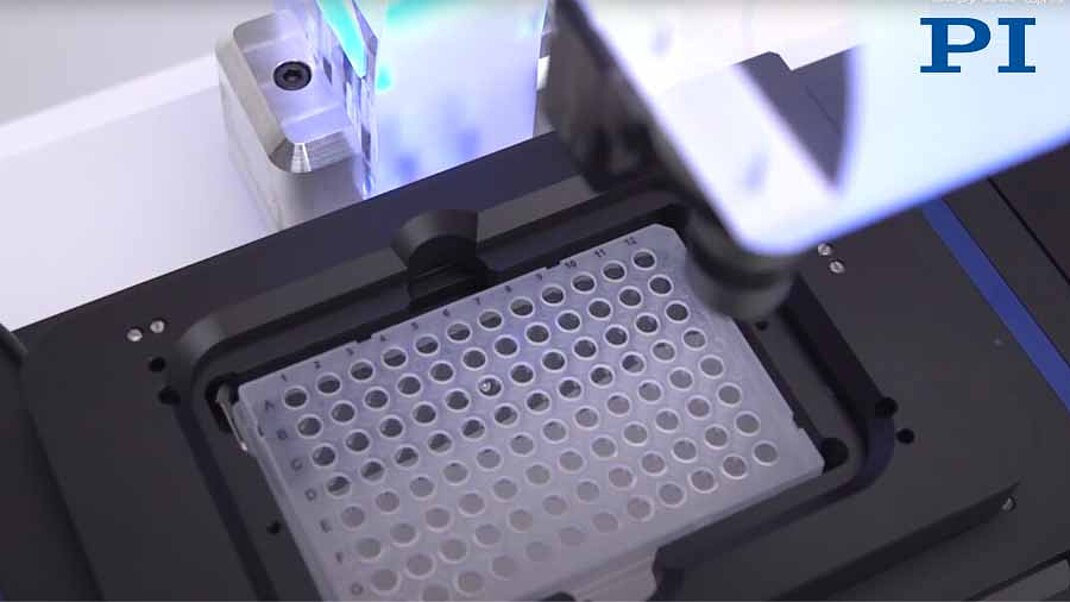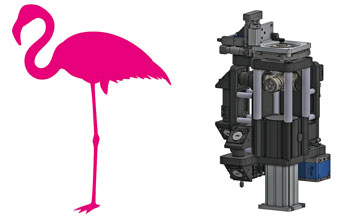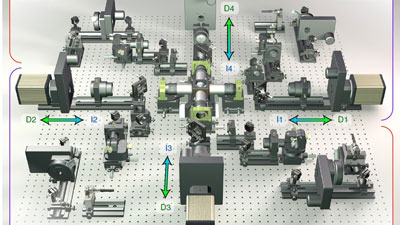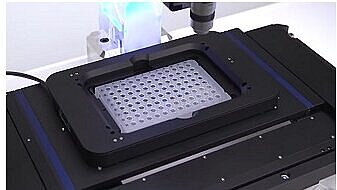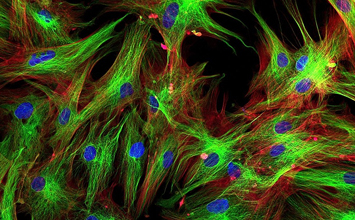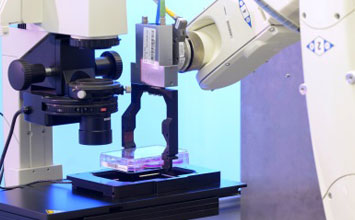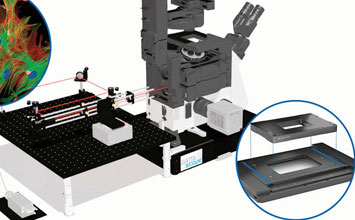Motorized Microscope Stage for High Precision Microscope Automation, w/Controller & Joystick
Low Profile XY Stage for Microscopy with High Dynamic Velocity Range and Excellent Stability
- Ideal for Microscope Automation
- Excellent Dynamics and Velocity Control from 10µm/s to 120mm/sec
- Ceramic Linear Motors for High Dynamics and Stability
- 0.1µm Linear Encoder Resolution
- XY-Travel Ranges to 135x85mm
- For Inverted High-Resolution Microscopes, Freely Revolving Nosepiece
- Compact, Low-Profile Design: Unrestricted Access to the Sample
- Extensive Microscope Accessories
U-780 motorized XY microscope positioning stages have been designed as drop-in upgrade replacements for the manual microscope XY-stages found on select Nikon, Olympus, Zeiss microscopes. High precision motorized stages are the first step to microscope automation and high-resolution imaging in applications such as stitching, digital slide scanning etc. The U-780 precision XY-stage system consists of a high performance, closed-loop motorized XY stage with large aperture, 100nm linear encoders, high performance 2-axis motion controller, USB joystick, and motor cables.
High Speed and Very Wide Dynamic Velocity Regulation Range, Excellent In-Position Stability
The incorporation of piezoceramic-based direct-drive linear motors enables rapid XY scanning, reaching speeds of up to 120 mm/sec. These motors exhibit an extensive dynamic range, ensuring consistent high velocity even when moving as slowly as 10 µm/sec. Unlike conventional electromagnetic XY microscope stages, these low-profile, non-magnetic ceramic linear motors possess the unique ability to automatically self-lock when at rest. This feature greatly enhances positional stability, eliminating servo jitter and maintaining exceptional stiffness. When XYZ motion, e.g. for fast sample focusing, is required, the P-736 PInano-Z piezo nanopositioning stage can be added to provide high precision XYZ motion ideally suited for laser scanning microscopy.
Suitable for the following inverted microscopes:
- Nikon Eclipse Ti / Ti2
- Olympus IX / IX2 / IX3
- Leica DMI6000 / DMI8
Linear Encoders for High Accuracy Position Measurement and Closed-Loop XY Position Control
Noncontact, high resolution optical encoders continuously measure the position of the microscope stage directly at the motion platform with the greatest accuracy, eliminating mechanical play and non-linearity as usually found with stepper-motor / screw-driven microscope stages. This technique also allows for much better position repeatability with precision in the sub-micron range.
2-Axis Motion Controller and Joystick - Included
The U-780 motorized microscope stage comes with a high-performance, programmable 2-axis motion controller and software for easy system setup. A joystick for manual operation of the XY stage is also included. Trigger functions in the controller allow switching between joystick mode and computer-controlled operation, as well as integration with external devices required for microscope automation.
Application Fields of PILine XY Microscope Stages
U-780 XY microscope stages are compatible with inverted high-resolution microscopes from Nikon, Olympus, and Leica (versions for other microscopes available on request). Applications include: super-resolution microscopy, tiling, automated scanning microscopy.
Optional Accessories: Sample holders, Nanopositioning Stages, and Z Focusing Stages for Super-Resolution Microscopy
You will find matching single-axis and multi-axis nanopositioning stages for high-speed scanning or fast sample Z-focusing (X / Y / Z / ΘX / ΘY / ΘZ), sample holders (microscope slide, holder for Petri dishes, and microtiter micro well plates), as well as adapter plates in our "Microscope Stage Configurator" brochure. The combination with our PInano Piezo-Z focus stages and PInano XYZ flexure nanopositioning scanning stages allows for the fastest tracking and scanning in the nanometer and sub-nanometer range – essential for single molecule super-resolution microscopy.
Programming / Computer Control / User Software
The included high-performance 2-axis motion controller comes with PI’s versatile PIMikroMove setup and programming software to facilitate microscope automation. It is compatible with PI General Command Set (GCS) and includs drivers for NI LabVIEW. The piezo motor controller is compatible with µManager, MetaMorph, Andor iQ, MATLAB.
What is the Function of a Microscope Stage?
The primary role of a microscope stage is to facilitate movement of a sample or objective in the x, y, or z directions. These stages are commonly available in various configurations: as single-axis platforms, XY stages, or more complex XYZ stages. Microscope stages are also known by different names such as XY tables, linear actuators, motorized stages, or linear translation stages.
XY motion is executed by an XY microscope stage, typically characterized by its slim, compact profile and a central aperture for transmissive imaging. Such stages are often driven by stepper motors and lead screws, although cutting-edge designs incorporate linear motors and linear encoders on each axis, which enable the establishment of a servo feedback loop for precise control.
What are the Advantages of Incorporating a Direct Drive Linear Motor in a Microscope Stage?
Fast focus drives on automated microscopes generally employ either piezo focus drives or voice coil direct drive focus stages. When integrated into a microscope stage, direct drive linear motors bring several benefits. These include an expanded range, enabling the retraction of the objective during sample loading and unloading, as well as offering exceptional resolution and repeatability. Typically, the position of the focus axis is directed by an autofocus sensor, which generates a focus error signal through methods such as a laser diode passing through the objective or a software-based autofocus algorithm.
What about Digital Microscopy?
Digital microscopy involves the use of a digital camera in lieu of a conventional eyepiece. The sample's image is directly observed and analyzed in real time on an electronic monitor display. Contemporary digital pathology, biomedical, life science, and diagnostic tools heavily depend on automated digital microscopy techniques. Various applications, such as genome sequencing, cell imaging devices, etc, make use of these solutions. When engineering these intricate systems, numerous factors come into play, requiring decisions that balance performance, throughput, and cost considerations.
Why Precision, Motorized XY and Z Motion is Important in Digital Microscope Automation
Given the magnification of the microscope objective, the field of view is usually considerably smaller than the actual sample under examination. To capture the entire sample, adjustments must be made: either the sample or the camera/objective should move across the XY plane. Moving the sample can be achieved with an XY-stage. Moving the camera would typically require a gantry-type setup. To get a complete digital image of the sample, software can stitch individual frames together, or the sample can be scanned at constant velocity.
Moreover, to ensure proper image resolution, precise alignment of the objective lens and the camera (or image sensor) is vital. This alignment, known as the Z axis, is typically vertical, and its movement runs perpendicular to the XY plane, effectively positioning the sample within the imaging field of view.

